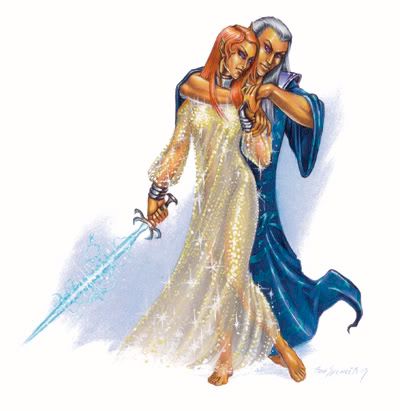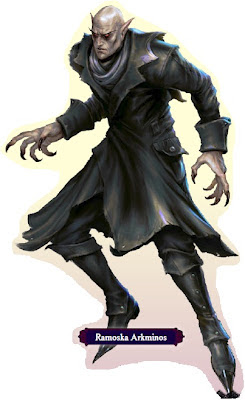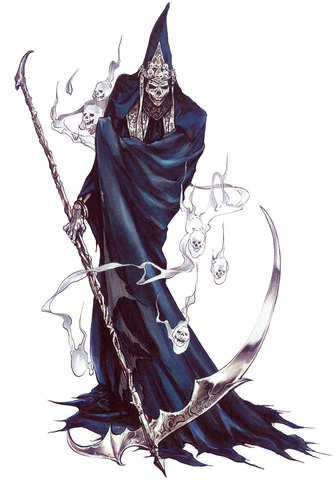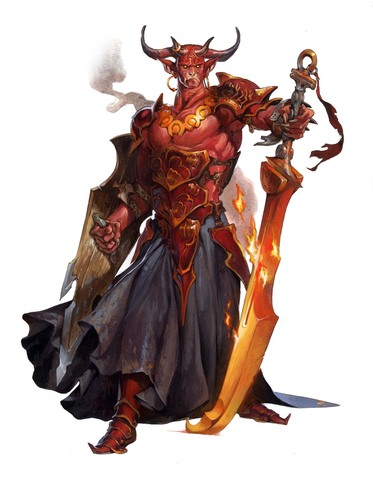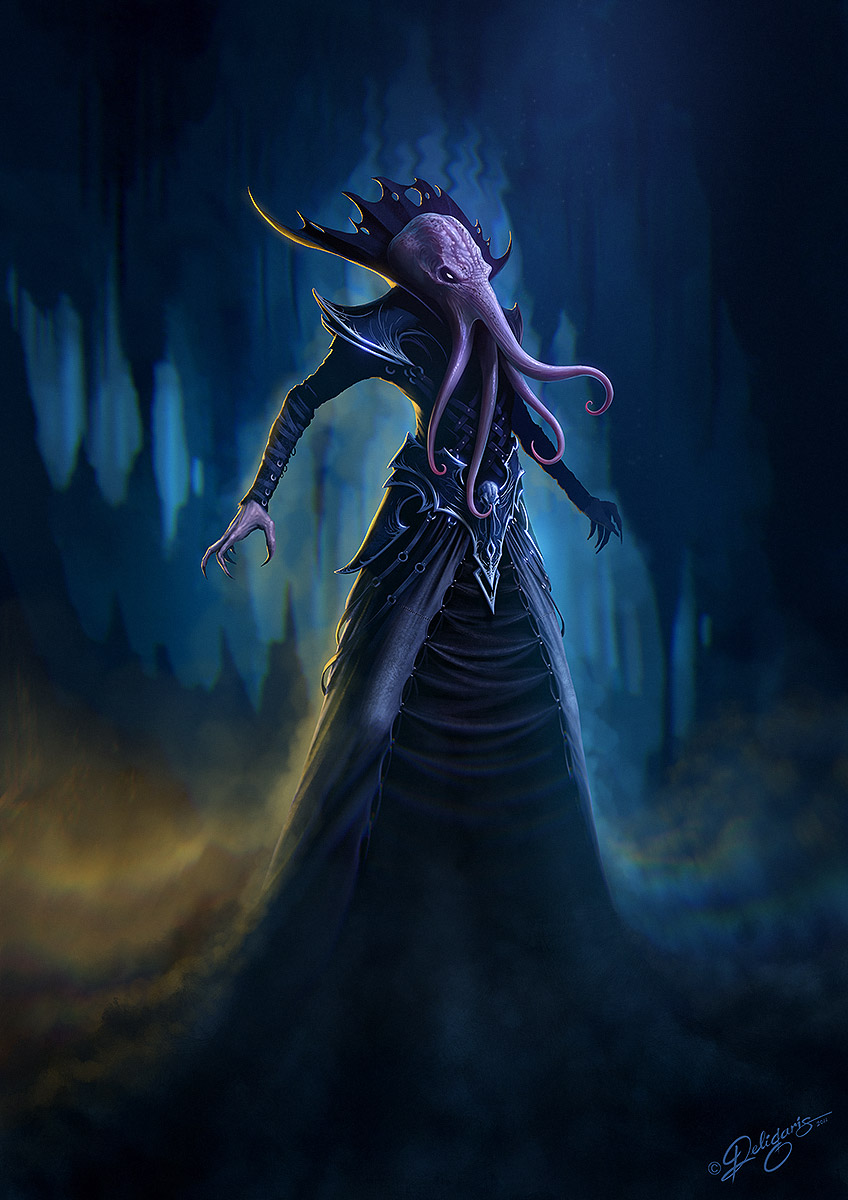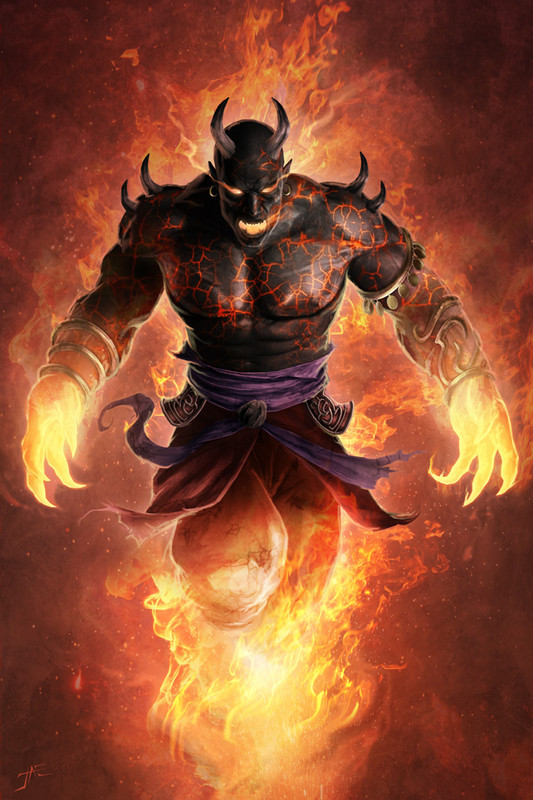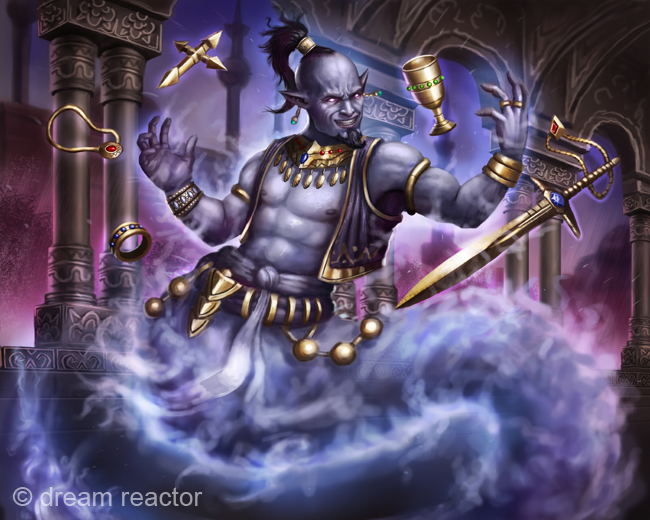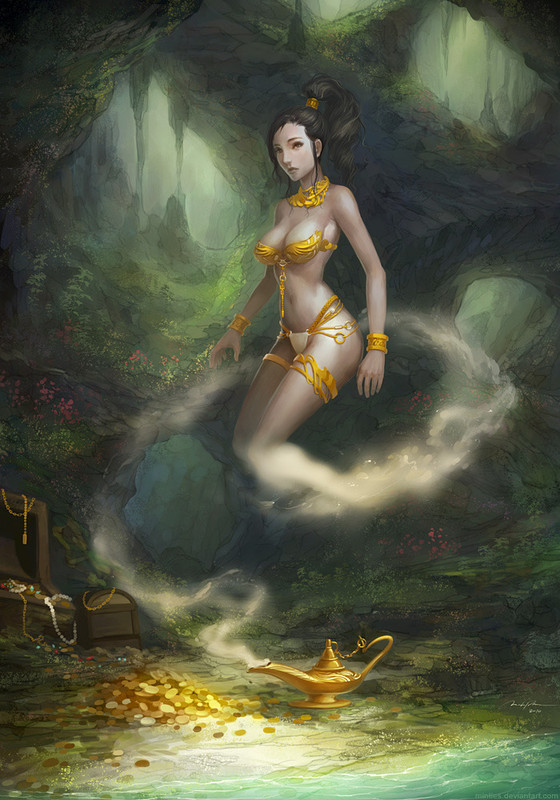Posted: Sat Jun 21, 2014 7:52 pm
Half-Fiend:
 Half-Fiends are mortals filled with the power of the lower planes. This usually comes from a fiend mating with a mortal, though other times it can be the result of a magical ritual. A half-fiends (also called cambion, or alu-fiend if the parent was a seducer fiend like a succubus) have a variety of appearances, depending on the parentage or the specifics of the ritual. This can also alter their abilities.
Half-Fiends are mortals filled with the power of the lower planes. This usually comes from a fiend mating with a mortal, though other times it can be the result of a magical ritual. A half-fiends (also called cambion, or alu-fiend if the parent was a seducer fiend like a succubus) have a variety of appearances, depending on the parentage or the specifics of the ritual. This can also alter their abilities.
A half-fiend is typically raised by the mother who gave birth to it, as the parents rarely stay together for long. If raised away from the lower planes, the child is usually an outcast (if they were not killed at birth), hated and feared by the community. If raised on the lower planes, they are typically abused and beaten as weakling half-breeds, always inferior to the full-blooded fiends. The combination of their heritage and upbringing leads many to become slaves to their evil nature. Other times a half-fiend rebels against the darkness within and becomes a champion of good.
The Half-Fiend is an acquired or inherited template that can be applied to any creature other than a non-native outsider.
Size and Type: Size is unchanged, Type becomes Spirit with the [Evil] and [Partial] subtypes. A half-fiend with 11HD or more gains the subtypes of their parent ([Baatezu], [Obyrith], [Ghereleth] [Yugoloth], [Loumara], or [Tanar'ri])
Armor Class: +1 bonus to natural armor (stacking with any other natural armor)
Speed: The Half-Fiend has a fly speed equal to twice their land speed with good maneuverability.
Attacks: A half fiend has two claws as primary natural weapons (1d6 for medium) and a bite (1d8) as a secondary weapon.
Special Attacks:
Smite Good (Su): Once per day, the Half-Fiend may imbue their attack with the power of evil. They add their charisma to hit and their level to damage on one melee attack against a good creature. If the target turns out to not be evil, or the attack misses, the smite is not wasted.
Spell-Like Abilities: A half-fiend has the following spell-like abilities. They are usable 1/day except where indicated.
Spell-Like Abilities
HD Abilities
1-2 Protection from good 3/day, bane
3-4 Desecrate, Detect Good
5-6 Unholy Blight, Poison 3/day
7-8 Suggestion, Contagion
9-10 Dispel Good
11-12 Blasphemy
13-14 Unholy Aura 3/day, Unhallow
15-16 Horrid Wilting
17-18 Dark Reckoning
19-20 Apocalypse from the Sky
Deeper Darkness (Su): A half-fiend may use deeper darkness, at will, as a supernatural ability.
Special Qualities: Immunity to Poison, Resistance to Acid, Electricty and Fire 10, Spell-Resistance 10+HD. DR5/Good for 10HD or less, DR10/Good for 11+HD, Outsider Traits, +4 to saves against disease
Abilities: +4 to four ability scores, +2 to two other
Environment: Any
Alignment: Usually Evil (Any)
Cost: Two Magic Item Slots
Variant Half-Fiends:
Not all half-fiends have the same abilities. They may vary depending on the heritage.
Half-Succubus
Also called Alu-Fiends, they inherit their parents seductiveness and beauty.
Appearance: Very attractive. Typically has a long tail ending in a triangle or spade like tip.
Kiss of Death (Su): On a successful touch attack (or attack with their natural weapon) the half-succubus may deal one negative level. By kissing a target, they may deal a number of negative levels equal to half their HD (round up) (unwilling targets may make a grapple check to prevent this). The kiss also comes with a suggestion asking the target to accept another kiss. The half-succubus recovers 5 hp per negative level inflicted. (replaces smite good)
Alter Self (Su): The alu-fiend may use alter self at will, to take the form of whatever type the creature was before the application of the template and outsiders. (replaces Deeper Darkness).
Nealan's Erotic Touch 3/day (Replaces protection from good)
Detect Thoughts (Replaces Desecrate)
Charm Monster 3/Day (Replaces Poison)
Dream (Replaces Contagion)
Dominate Monster (replaces Horrid Wilting).
Bind Thrall (replaces Dark Reckoning)
Winds of Memory (replaces Apocalypse from the Sky)

A half-fiend is typically raised by the mother who gave birth to it, as the parents rarely stay together for long. If raised away from the lower planes, the child is usually an outcast (if they were not killed at birth), hated and feared by the community. If raised on the lower planes, they are typically abused and beaten as weakling half-breeds, always inferior to the full-blooded fiends. The combination of their heritage and upbringing leads many to become slaves to their evil nature. Other times a half-fiend rebels against the darkness within and becomes a champion of good.
The Half-Fiend is an acquired or inherited template that can be applied to any creature other than a non-native outsider.
Size and Type: Size is unchanged, Type becomes Spirit with the [Evil] and [Partial] subtypes. A half-fiend with 11HD or more gains the subtypes of their parent ([Baatezu], [Obyrith], [Ghereleth] [Yugoloth], [Loumara], or [Tanar'ri])
Armor Class: +1 bonus to natural armor (stacking with any other natural armor)
Speed: The Half-Fiend has a fly speed equal to twice their land speed with good maneuverability.
Attacks: A half fiend has two claws as primary natural weapons (1d6 for medium) and a bite (1d8) as a secondary weapon.
Special Attacks:
Smite Good (Su): Once per day, the Half-Fiend may imbue their attack with the power of evil. They add their charisma to hit and their level to damage on one melee attack against a good creature. If the target turns out to not be evil, or the attack misses, the smite is not wasted.
Spell-Like Abilities: A half-fiend has the following spell-like abilities. They are usable 1/day except where indicated.
Spell-Like Abilities
HD Abilities
1-2 Protection from good 3/day, bane
3-4 Desecrate, Detect Good
5-6 Unholy Blight, Poison 3/day
7-8 Suggestion, Contagion
9-10 Dispel Good
11-12 Blasphemy
13-14 Unholy Aura 3/day, Unhallow
15-16 Horrid Wilting
17-18 Dark Reckoning
19-20 Apocalypse from the Sky
Deeper Darkness (Su): A half-fiend may use deeper darkness, at will, as a supernatural ability.
Special Qualities: Immunity to Poison, Resistance to Acid, Electricty and Fire 10, Spell-Resistance 10+HD. DR5/Good for 10HD or less, DR10/Good for 11+HD, Outsider Traits, +4 to saves against disease
Abilities: +4 to four ability scores, +2 to two other
Environment: Any
Alignment: Usually Evil (Any)
Cost: Two Magic Item Slots
Variant Half-Fiends:
Not all half-fiends have the same abilities. They may vary depending on the heritage.
Half-Succubus
Also called Alu-Fiends, they inherit their parents seductiveness and beauty.
Appearance: Very attractive. Typically has a long tail ending in a triangle or spade like tip.
Kiss of Death (Su): On a successful touch attack (or attack with their natural weapon) the half-succubus may deal one negative level. By kissing a target, they may deal a number of negative levels equal to half their HD (round up) (unwilling targets may make a grapple check to prevent this). The kiss also comes with a suggestion asking the target to accept another kiss. The half-succubus recovers 5 hp per negative level inflicted. (replaces smite good)
Alter Self (Su): The alu-fiend may use alter self at will, to take the form of whatever type the creature was before the application of the template and outsiders. (replaces Deeper Darkness).
Nealan's Erotic Touch 3/day (Replaces protection from good)
Detect Thoughts (Replaces Desecrate)
Charm Monster 3/Day (Replaces Poison)
Dream (Replaces Contagion)
Dominate Monster (replaces Horrid Wilting).
Bind Thrall (replaces Dark Reckoning)
Winds of Memory (replaces Apocalypse from the Sky)





